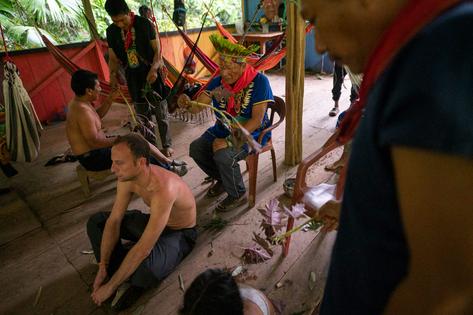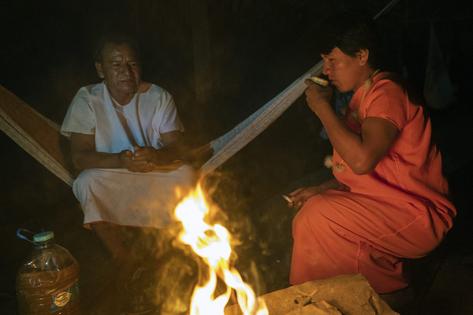Western interest in ayahuasca is creating challenges for local Indigenous communities and raising issues of cultural appropriation
Published in News & Features
Ayahuasca, a sacred drink made from the stem and leaves of a tree vine, has many names: psychedelic brew, hallucinogenic tea, mood medicine and more. It is even known as a teacher or a healer for its reported ability to help a person turn inward and come into alignment with past traumas.
The plant and the rituals associated with it have deep roots in South American shamanic traditions. But in the past few decades, stories about the spiritually enhancing magic of ayahuasca have made their way to Europe and North America.
Lauded for its transcendent healing powers by celebrities such as Lindsay Lohan, athletes such as Aaron Rodgers and successful businessmen such as Elon Musk, the psychotropic allure of the plant now calls to hundreds of thousands of non-Indigenous consciousness-seekers globally. More and more ayahuasca retreats are popping up around the world.
Indigenous peoples in South America – primarily in Peru, Brazil and other parts of what is considered the Upper Amazon – have been using ayahuasca for medicinal and religious purposes since at least 900 B.C.E. Hieroglyphic paintings depict the use of the sacred brew in a ceremony from the period of 900-250 B.C.E. Western interest in ayahuasca, however, has created some challenges for local Indigenous communities.
As a medical anthropologist, I have spent the past quarter century studying the ways in which culture affects how people view and make decisions about their bodies. Through researching the connections between sexuality, drugs and cultures, I have come to understand the role of plant medicines like ayahuasca for individuals and communities.
Anthropologist of shamanism Michael Winkelman describes ayahuasca as a “psychoindicator,” a substance that integrates emotion and thought processes.
According to Western scientific interpretations, the primary function of the substance allows a stripping away of a person’s egocentric, conscious understanding of the world. Seekers “die unto themselves,” is what a shaman told me.
In an altered state of consciousness, it is believed that the person can tap into their true wants and experiences and begin the process of deeper healing, awakening or spiritual cleansing.
Traditionally, anthropologists note that ayahuasca has been used in South America to unlock information coming from unseen realms. Specifically, it was often called upon for divination, artistic inspiration, strategic insights, healing and shamanic journeys.
While thousands of tourists flock to South America from all over the world each year in search of an “authentic” ayahuasca ritual, the exact tenets of the ritual today are somewhat under debate, though a few common themes do emerge.
...continued











Comments